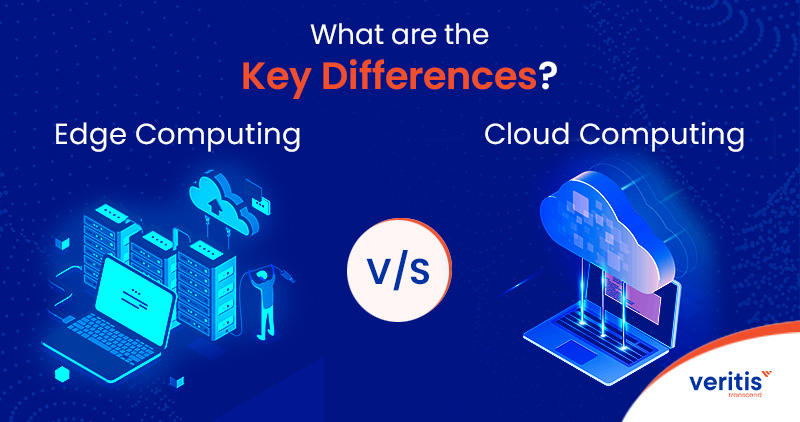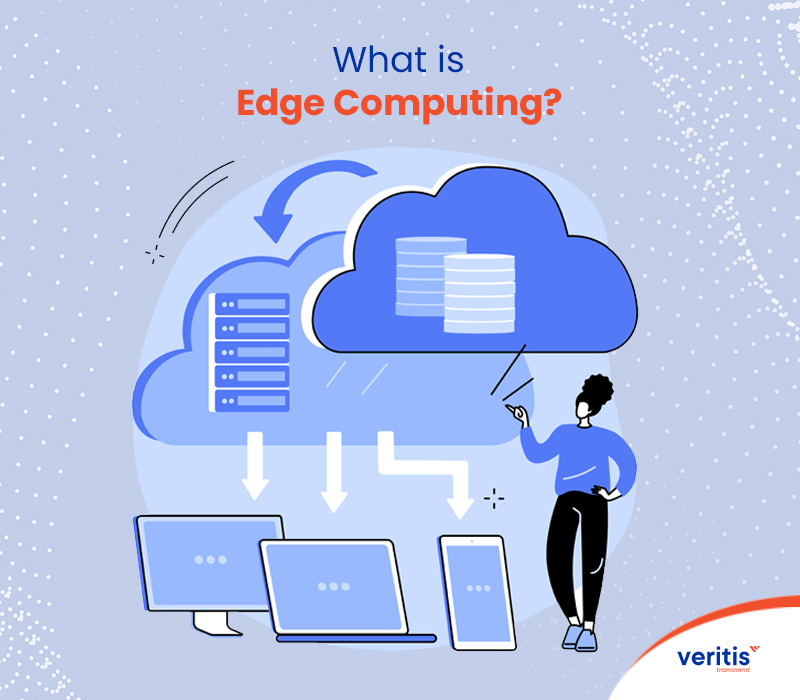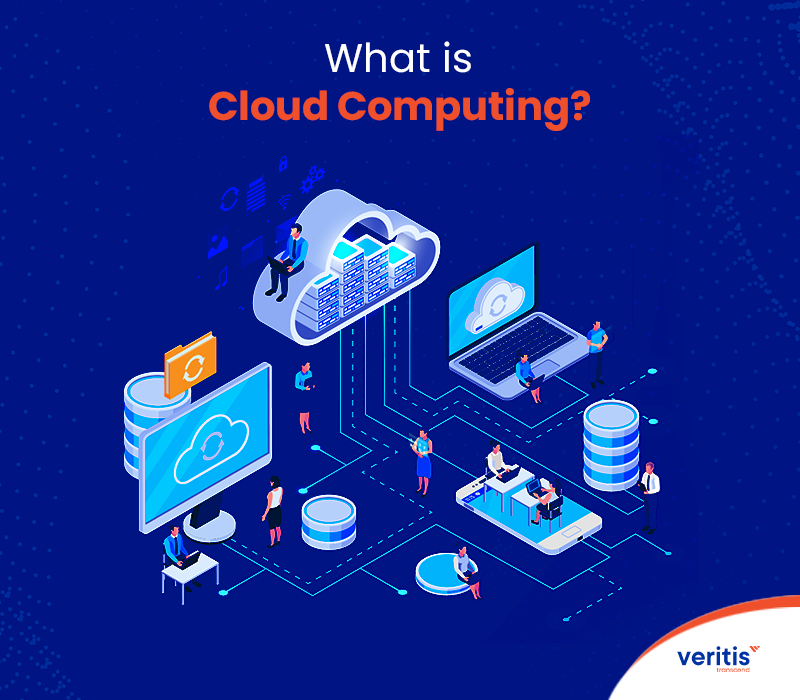
The future of computing lies in the cloud and edge infrastructures. Edge computing reduces response times by bringing computers closer to the data source. On the other hand, cloud computing charges a set, ongoing cost to supply cutting-edge technology through the internet.
Public cloud computing enable businesses to add worldwide servers to their private data centers, extending their infrastructure to any location and enabling them to scale computational resources up and down as necessary. These hybrid public-private clouds provide unheard-of flexibility, value, and security for enterprise computing applications.
According to the FiorMarkets survey, the edge computing market is anticipated to reach USD 18.36 billion by 2027 at a CAGR of 37.9 % from 2023 to 2030.
However, real-time AI applications can necessitate a considerable amount of local processing power in remote areas that are too far from centralized cloud servers. Additionally, some workloads must stay on-site or in a particular area due to low latency or data-residency constraints.
This is why many businesses use multiaccess edge computing, which generates data to deploy their AI applications. Edge computing companies handle and store data locally on an edge device rather than in a remote, centralized data bank. The gadget can also function as a stand-alone network node without requiring a connection to the internet.
A cloud is a networked computing system that pools, abstracts, and distributes IT resources. Devices physically close to the user or the data source are referred to as the edge infrastructure. In contrast to edge computing solutions, which involve using edge devices to run workloads, cloud computing involves operating workloads within clouds. Before comparing edge computing and cloud computing, let’s have the concepts first.
What is Edge Computing?

Edge computing is physically bringing compute capacity closer to the location where data is created, typically an Internet of Things device or sensor. Edge computing, so named because it moves to compute capacity to the network or device’s edge, enables quicker data processing, more bandwidth, and secured data sovereignty.
Companies eliminate the need for massive volumes of data to travel between servers. Instead, the cloud and devices or edge locations will process by processing data at a network’s edge. This is especially crucial for contemporary applications like data science and artificial intelligence.
With no communication with a central processing system required, processing times are increased because all data is processed locally. This improves data processing effectiveness and lowers the amount of internet bandwidth needed, which lowers operational costs and makes it possible to operate applications in remote areas with spotty connectivity. According to Gartner, 75% of enterprise data processing will occur at the edge by 2025.
Edge computing solutions improve better control over data, lower costs, and quicker insights and actions. And more continuous and efficient operations by moving data processing and storage closer to its source. IoT Edge cloud platform enhances cybersecurity by minimizing the requirement for communication with public cloud platforms and networks. Smartphones, IoT sensors, and laptops are some of the most uncomplicated instances of edge computers.
The edge computing platform is not a brand-new idea. Its roots can be found in content distribution networks created in the late 1990s to distribute web material, such as video, from edge servers positioned near users. These networks developed in the early 2000s, hosting applications on AWS edge computing applications server to create the first industrial edge to cloud computing.
Ad insertion engines, dealer locators, shopping carts, and real-time data aggregators were among the hosted apps. Edge cloud computing simplifies real-time data processing and lowers latency to support cutting-edge applications like driverless cars, the internet of things (IoT), voice assistants, and traffic management. Edge computing impacts multiple sectors and drives IT teams to implement new edge computing architectures, deployment methodologies, and business models.
Traditional business applications use local area networks (LAN) and wide area networks (WAN), like the internet. Or a combination of transferring data from data-generating endpoints to a centralized enterprise application. After processing the data, the centralized platform transmits the results back to the endpoint.
However, more data is created as more devices are connected to workplace networks. As a result, this structure is gradually losing its viability. The internet as a whole and local network could be put under tremendous stress if centralized processing networks are still used. Businesses can improve the dependability of their extensive data processing systems by utilizing edge to cloud computing solutions to alleviate delayed response times brought on by congestion. Moreover, the benefits of edge computing are improved security, decreased costs, minimized latency, enhanced efficiencies, and more.
Useful link: What is Edge Machine Learning?
What is Cloud Computing?

Cloud computing is a technique for storing and processing data remotely rather than locally. Cloud computing users can access their files anytime and from any location. But they also have no control over what happens to their data once uploaded to servers run by another business or organization.
There are various advantages to cloud computing. According to the Harvard Business Review research “The State of Cloud-Driven Transformation,” 83% of respondents indicated that the cloud is crucial to their firm’s future strategy and expansion.
By using hosted services, including servers, data storage, networking, and software through the internet, we refer to this as cloud computing. A cloud service provider maintains servers where the data is stored.
Cloud computing has changed many industries by upending how businesses view IT resources. Businesses now have on-demand, low-cost online access to apps, storage, real and virtual servers, networking capabilities, development tools, and other cutting-edge technologies thanks to cloud computing. Services for cloud computing are housed in distant data centers run privately by a company or a third-party vendor.
The technology underlying the cloud, including virtualized IT infrastructures like operating systems, servers, and networks, is included in a more significant definition of cloud computing. Regardless of the constraints imposed by actual hardware, this virtual technology employs specialized software to pool and securely share computer resources. As a result, cloud service providers can maximize the use of their infrastructure thanks to virtualization in cloud computing. For instance, a single hardware server may divide into several unique virtual servers that serve various users.
The following three categories of cloud computing exist public, private, and hybrid. Third-party providers who offer their services to numerous clients online operate and manage public cloud platforms. The vendor covers all equipment, software, and extra utilities like internet and energy. After agreeing with the supplier, clients can use a web browser to access the infrastructure, platform, or software hosted by the vendor. Public clouds include Microsoft Azure, Amazon Web Services (AWS), and Google Cloud.
Private cloud platforms are computing resources in the cloud that are only accessed and used by a single company. Businesses use the cloud delivery approach for their internal applications to achieve cost savings and resource efficiency. Private cloud infrastructure, as opposed to public cloud infrastructure, can be installed on-site, and is managed by the business that utilizes it. On the other hand, public cloud infrastructure is maintained and hosted remotely by a different vendor. However, Private cloud platforms can also be hosted by third-party service providers on behalf of businesses for a price. Finally, hybrid cloud platforms combine public and private platforms using technology, allowing them to communicate data and applications. Because of the increased deployment options available to enterprises, flexibility is improved, and compliance and cybersecurity are improved.
For various purposes, including disaster recovery, software development, and testing, client-facing web apps, big data analytics, email, virtual desktops, and data backup, companies of all sizes and industries are using cloud computing. For instance, financial institutions rely on extensive edge to cloud solutions to spot and stop fraud in real-time, while healthcare institutions use cloud-based tools to customize patient care. In addition, cloud infrastructure provides end customers with quicker service and greater convenience than traditional IT infrastructure.
Useful link: Cloud Computing: Trends, Challenges and Benefits
Comparison Between Edge Computing Vs Cloud Computing
| Parameters | Edge Computing | Cloud Computing |
| Concept | Edge computing is a technique for handling data that involves storing it close to where it was generated. This makes it possible to respond to demand changes more quickly and ensures no information access bottlenecks. | Cloud computing is a technique for storing and processing data remotely rather than locally. Cloud computing users can access their files anytime and from any location. But they also have no control over what happens to their data once uploaded to servers run by another business or organization. |
| Goal | Edge computing’s primary goals are real-time data processing and device connection. | Cloud computing focuses on storing and analyzing massive amounts of unstructured data. |
| Contains Storage | Local storage is a component of edge computing. | The use of remote storage is part of cloud computing. |
| Data Distribution | Edge computing disperses the data among numerous places. | The data is centralized and kept in one place while using cloud computing. |
| Data Analysis | In edge computing, data processing takes place at the network’s edge. | Data processing takes place in the cloud in cloud computing. |
| Cost-Effectiveness | Edge computing is less economical. | Cloud computing is more cost-effective due to the centralization of resources in one place. |
| Use Cases | Edge computing is more appropriate for technology that requires quick connectivity and minimal latency (such as drones). | Applications that need to process massive amounts of data simultaneously benefit more naturally from cloud computing (such as image recognition). |
| Cost-Effectiveness | Edge computing is less economical. | Cloud computing is more cost-effective due to the centralization of resources in one place. |
| Operations | Edge computing applications take place mainly on the system itself. | Cloud storage is possible on networks such as Amazon EC2 and Google Cloud. |
| Security | Edge computing requires a thorough security plan that includes advanced authentication technologies and efficient threat mitigation. | It doesn’t require as extensive of a protection strategy. |
| Programming | It is possible to employ several application programs for development, each with a different running time. | Since cloud development typically uses a single programming language and is designed for development environments, it is excellent. |
Conclusion
Understanding the edge computing vs cloud computing are two different technologies that cannot be substituted for one another is essential. The critical difference is responsiveness: cloud computing is better suited for processing massive amounts of non-time-sensitive information, whereas edge computing security is best for processing data in real-time.
Edge computing is preferable over cloud computing in remote areas with poor or non-existent connectivity to a centralized site, in addition, to delay. Industrial edge computing offers the ideal solution for this local storage requirement at these locations, like a micro data center.
These computer systems have individual and collaborative applications in various futuristic scenarios. Moreover, given their immense potential, edge, and cloud computing will help usher in a new computing paradigm across various business sectors.
Got Questions? Schedule A Call
Additional Resources:
- 10 Cloud Computing Trends Which Shall Dominate 2023
- All You Need to Know About Top 10 Security Issues in Cloud Computing
- Cloud: The Technology Reinventing the Global Work Culture
- Application Container Market to Reach USD 8.2 Bn by 2025!
- How Does Cloud Computing Help Fintech?
- Why Data Driven Culture is Important for You